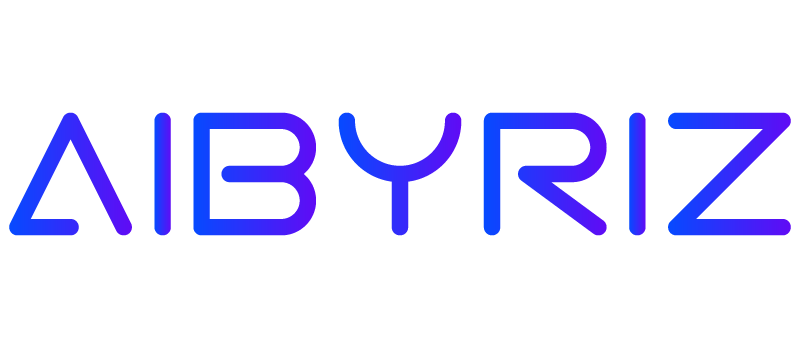Business leaders worldwide see how AI reshapes their operations daily. Research reveals that companies with AI-knowledgeable leadership teams grow revenue 50% faster than their rivals. This makes it crucial for today’s business leaders and CEOs to understand AI’s power to reshape their teams and bring state-of-the-art solutions.
Success in generative AI and emerging technologies comes from blending human expertise with AI capabilities. Leaders need to know how to develop an AI-driven mindset and use AI tools effectively. This piece shows executives how to build a culture that embraces new ideas. They will discover practical ways to implement AI technologies, handle team dynamics, and make smart decisions about AI adoption while keeping ethical principles in mind.
Understanding AI’s Impact on Leadership
Artificial intelligence transforms workplaces faster, and generative AI shows the highest adoption rate among all technologies to date 1. This ongoing integration reshapes how leaders guide their teams and make strategic decisions.
Key AI Technologies for Leaders
Business leaders harness significant AI technologies in modern operations:
- Generative AI for content creation and analysis
- Predictive analytics for decision support
- Automation tools for routine tasks
- Virtual assistants for team coordination
How AI is changing team dynamics
Teams experience major changes in their collaboration patterns and performance when AI joins the mix. Research reveals that skilled teams blend AI tools naturally into their workflow 2. Many organisations struggle early with team coordination. Team performance depends heavily on skill levels. Low and medium-skilled teams show noticeable drops in their effectiveness 2.
Potential benefits and challenges
Business leaders who use AI technologies see their profits rise by 38% by 2035 3. These changes bring both opportunities and hurdles:
| Benefits | Challenges |
|---|
| Up-to-the-minute data analysis cuts task time by 50% 3 | Employee resistance and trust issues |
| Customised learning capabilities | Need for continuous skill development |
| Better decision-making through predictive analytics | Ethical considerations and data privacy |
Recent studies show that 44% of company leaders believe their teams need new skills to thrive in an AI-driven business environment 4. This reality pushes organisations to build strong support systems for skill development and adaptation.
AI adoption significantly affects employees between 35-44 years old. About 52% of them think their companies will replace human-led roles with AI within the next year 5. Business leaders must find the right balance between advancing technology and people-focused leadership. They need to use emotional intelligence and clear communication to keep their teams confident and productive.
Developing an AI-Driven Leadership Mindset
The AI era just needs leaders to do more than adopt technology—they must fundamentally change their thinking and approach to leadership. Leaders who take calculated risks with AI implementation achieve better results than their cautious counterparts 6.
Embracing a growth mindset
A growth mindset serves as the life-blood of effective AI leadership. Research shows that leaders who adopt this approach see AI as a chance to increase their capabilities instead of viewing it as a threat to their authority 6. Their mindset welcomes experimentation and treats setbacks as valuable learning experiences, while data reveals that every interaction adds to continuous growth and development 6.
Balancing human and artificial intelligence
Success in AI leadership depends on finding the sweet spot between human judgement and AI capabilities. Here’s a practical framework that works:
| Traditional Approach | AI-Driven Mindset |
|---|
| Reactive decision-making | Data-informed proactive planning |
| Individual expertise | Collaborative intelligence |
| Fixed processes | Adaptive learning systems |
Leaders should understand that AI processes huge amounts of data within seconds 3. However, leadership’s human elements—empathy, ethical judgement, and knowing how to inspire—will always be essential 7.
Ethical considerations
Leaders face several key ethical challenges as they bring AI into their organisations:
- Making AI decisions clear and understandable 8
- Stopping team management algorithms from showing unfair bias
- Keeping data private and secure
- Making sure humans stay in charge of crucial decisions
Leaders need to think over both technical potential and human elements as they blend AI into their leadership style. Studies show AI can boost decision-making by 50% or more 3. The success ended up depending on how well leaders encourage a culture that adopts both tech advances and people-first values.
Leveraging AI Tools to Empower Your Team
Companies today are finding that AI tools can boost their teams’ performance and efficiency. Research shows that these AI-powered tools cut training costs by up to 35% and deliver better outcomes 9.
AI-powered productivity and collaboration tools
Technology leaders create powerful collaboration platforms that change how teams work together. These platforms include several helpful features:
- Automatic meeting transcription and action item extraction
- Smart document summarization and organisation
- Cross-platform message integration
- AI-powered project management assistance
ClickUp Brain shows how AI can combine information from chats, projects, and documents. Teams get an AI assistant that’s always ready to help 10.
Using AI for personalised learning and development
AI-driven learning platforms have transformed how companies develop their employees. Research shows that by 2025, 75% of businesses worldwide will adopt AI-driven solutions in their employee development programmes 9. These platforms use machine learning algorithms to:
| Learning Aspect | AI Enhancement |
|---|
| Content Delivery | Materials generated automatically based on industry trends |
| Progress Tracking | Immediate assessment and adjustment |
| Skill Development | Individual-specific content based on needs |
Studies show that AI-powered individual-specific learning can boost employee involvement by up to 60% 9. This makes the training process dynamic and successful.
Automating routine tasks
AI has reshaped the scene of daily operations. Recent studies show AI can automate half of all repetitive tasks in corporate training settings 9. Teams that use Microsoft Teams can now create simplified processes through natural language instructions. These automated workflows need setup just once and then run repeatedly 11.
AI assistants excel at handling day-to-day communications. They generate relevant responses and turn long discussions into quick summaries. The team’s meeting notes are created automatically, which lets members concentrate on strategic work 12.
Fostering a Culture of AI-Enabled Innovation
AI tools alone cannot create an environment where breakthroughs run. The process just needs a cultural transformation that encourages experimentation and celebrates progress. Organisations that promote AI breakthroughs have experienced a 31.7% increase in daily active usage of AI tools 13. This shows how cultural change drives adoption effectively.
Making AI experimentation work
Leaders must build an environment where teams have the ability to explore AI applications without fear of failure. Organisations that provide dedicated time for AI experimentation see double-digit increases in employee confidence and motivation 14. Leaders should take these key steps:
- Set aside specific time blocks for state-of-the-art ideas
- Build safe spaces where teams can learn and experiment
- Give teams access to AI training resources
- Create peer-to-peer learning networks that work effectively
Building cross-functional AI teams
AI implementation succeeds when experts from different fields work together seamlessly. A well-laid-out cross-functional team has:
| Role | Key Responsibilities |
|---|
| Data Scientists | Analyse data, develop predictive models |
| Machine Learning Engineers | Deploy and scale AI solutions |
| Domain Experts | Provide subject matter expertise |
| Project Managers | Oversee implementation and timeline |
| Ethicists | Ensure responsible AI practises |
The team thrives with inclusive hiring practises and a supportive team culture that encourages knowledge sharing between different skill sets 15.
Celebrating AI-driven successes
Recognition is a vital part of promoting state-of-the-art ideas. Organisations that use AI-driven recognition systems report higher employee satisfaction and better team cooperation 16. Leaders should focus on:
Teams respond well to genuine appreciation moments that strike a chord. This approach has strengthened workplace cultures by a lot 16. Companies using AI-powered platforms to boost engagement have spotted and celebrated achievements that human managers might overlook 16.
Organisations with complete recognition programmes show remarkable results. Their data reveals an 8% boost in tool adoption rates, while some teams reach up to 14% higher engagement levels 13. These results come from an environment where employees feel at ease to share experiences and learn from each other’s new ideas 14.
Conclusion
Leaders who become skilled at AI implementation while retaining control create powerful opportunities for their teams and organisations. Research shows that successful AI adoption needs both technological expertise and emotional intelligence with clear communication. Teams report higher involvement, lower operational costs, and major improvements in breakthroughs and productivity when their organisations achieve this balance. These results come from leadership approaches that value AI capabilities and human potential equally.
AI leadership’s future promises remarkable outcomes for teams ready to adopt change. Smart leaders know that AI works as a powerful tool to improve human capabilities instead of replacing them. Organisations that build supportive environments for AI experiments and focus on human development will succeed in an AI-driven future. Leaders who bring enthusiasm to AI implementation and think over their team’s needs will lead positive organisational changes.
FAQs
How does AI contribute to leadership?
AI enhances leadership by providing data-driven analytics and insights, which support the development of customised training programmes. This allows organisations to tailor their leadership development strategies for more effective outcomes.
What methods do leaders use to motivate their teams?
One of the most effective methods for leaders to motivate their teams is through positive feedback. Commending an individual’s achievements in front of their peers can inspire the entire team to strive for recognition and success.
How can leaders encourage their employees to adopt AI technologies?
To foster AI adoption, leaders should provide comprehensive training and support. It’s crucial to equip staff with the necessary skills to effectively collaborate with AI by covering the fundamentals of AI technology, its applications within the company, and proper interaction protocols.
In what ways is AI transforming leadership?
In the era of AI, leadership is shifting towards a more facilitative role rather than a directive one. Leaders are increasingly empowering their teams to use AI for routine tasks, allowing them to concentrate on strategic planning and nurturing human relationships.
References
[1] – https://hbr.org/2024/04/how-ai-features-can-change-team-dynamics
[2] – https://business.columbia.edu/insights/business-society/understanding-impact-ai-team-performance-challenges-and-insights
[3] – https://acacialearning.com/blog/management-and-leadership/5-ways-ai-is-impacting-leadership-development/
[4] – https://www.forbes.com/sites/sherzododilov/2024/07/14/ai-leadership-why-ai-is-every-leaders-responsibility/
[5] – https://www.lhh.com/uk/en/insights/guiding-your-team-through-the-ai-transformation/
[6] – https://www.gpstrategies.com/blog/unlocking-ais-potential-why-a-growth-mindset-is-key/
[7] – https://www.managementtoday.co.uk/future-leaders-ai/food-for-thought/article/1880582
[8] – https://www.mtdtraining.com/blog/ai-leadership-decision-making.htm
[9] – https://elearningindustry.com/how-ai-is-revolutionising-employee-training-efficiency-personalization-and-engagement
[10] – https://clickup.com/blog/ai-collaboration-tools/
[11] – https://www.nasstar.com/hub/blog/microsoft-teams-automations
[12] – https://www.digital-adoption.com/ai-collaboration-tools/
[13] – https://news.microsoft.com/source/asia/2024/10/31/3-ways-to-boost-ai-usage-and-make-it-stick/
[14] – https://www.thedrum.com/opinion/2024/08/09/let-your-team-experiment-with-ai-it-s-the-best-way-build-their-confidence
[15] – https://dialzara.com/blog/cross-functional-teams-for-ai-success-guide/
[16] – https://www.articlecube.com/celebrate-achievements-how-ai-driven-recognition-enhances-employee-engagement














